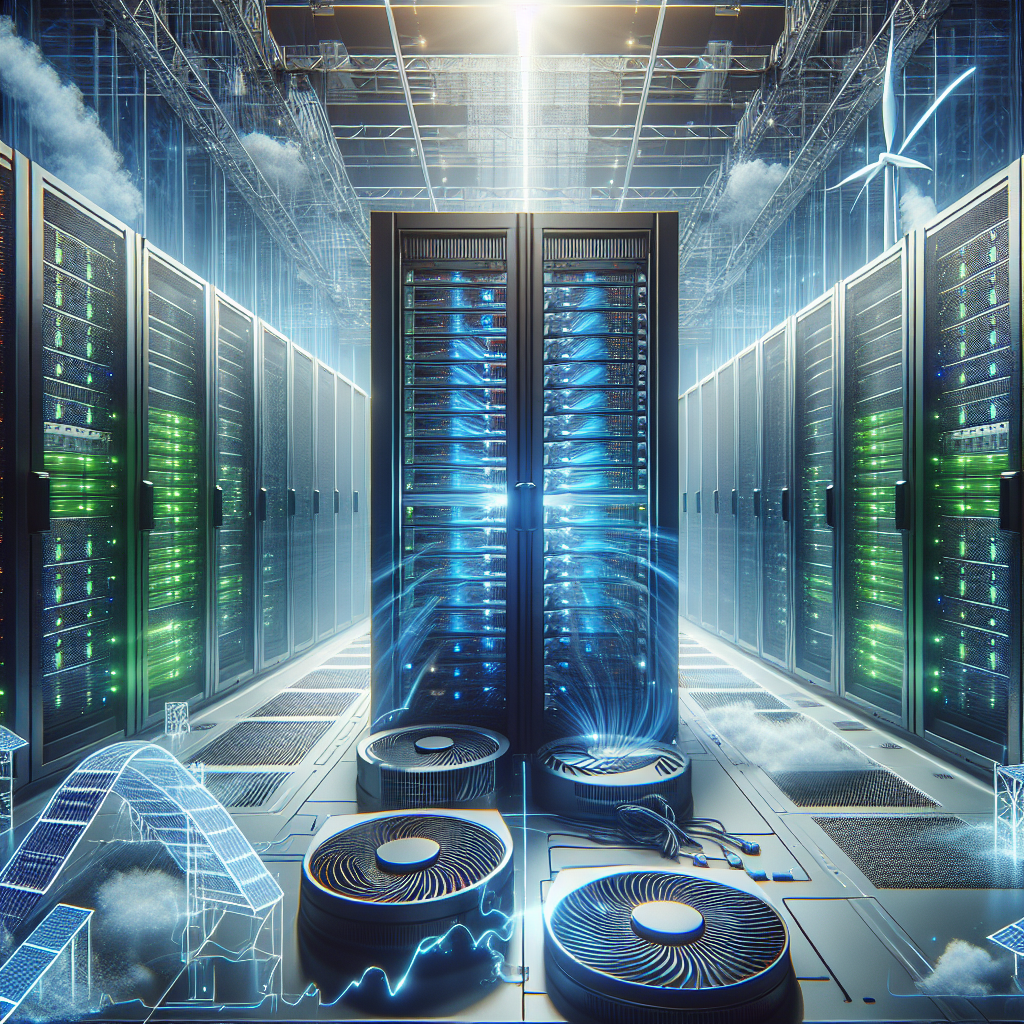Your cart is currently empty!
Optimizing Data Center Cooling for Cost Savings and Sustainability

In today’s digital age, data centers play a crucial role in storing and processing vast amounts of information for businesses and organizations. However, with the increasing demand for data storage and processing power, data centers are also becoming major energy consumers, leading to high operational costs and environmental impact. One of the key challenges faced by data center operators is how to efficiently cool the servers and equipment to prevent overheating and ensure optimal performance.
Optimizing data center cooling is not only essential for cost savings but also for sustainability. By implementing energy-efficient cooling solutions, data center operators can significantly reduce their energy consumption, lower operational costs, and minimize their carbon footprint. Here are some strategies to optimize data center cooling for cost savings and sustainability:
1. Use Hot Aisle/Cold Aisle Containment: One of the most effective ways to optimize data center cooling is by implementing hot aisle/cold aisle containment. This design separates the hot exhaust air from the cold intake air, reducing the mixing of air temperatures and improving the overall efficiency of the cooling system. By containing the hot air and directing it back to the cooling units, data center operators can reduce the workload on the cooling systems and lower energy consumption.
2. Implement Airflow Management: Proper airflow management is essential for optimizing data center cooling. By ensuring that air flows efficiently through the server racks and equipment, data center operators can prevent hot spots and maintain a consistent temperature throughout the facility. Implementing airflow management strategies such as blanking panels, cable management, and perforated floor tiles can help improve cooling efficiency and reduce energy consumption.
3. Utilize Free Cooling: Free cooling is a cost-effective and sustainable cooling solution that utilizes outside air to cool the data center without the need for mechanical cooling systems. By installing air-side economizers or evaporative cooling systems, data center operators can take advantage of cooler ambient temperatures to reduce energy usage and lower operational costs. Free cooling can be particularly effective in regions with moderate climates where outside air temperatures are suitable for cooling data center equipment.
4. Optimize Cooling System Efficiency: Upgrading to energy-efficient cooling systems can significantly reduce energy consumption and operational costs. Data center operators can invest in modern cooling technologies such as variable speed fans, chilled water systems, and direct liquid cooling solutions to improve the efficiency of their cooling systems. By optimizing the performance of cooling equipment, data center operators can achieve significant cost savings and reduce their environmental impact.
5. Monitor and Analyze Cooling Performance: Regular monitoring and analysis of cooling performance are essential for identifying inefficiencies and optimizing data center cooling. By using temperature sensors, airflow meters, and data analytics tools, data center operators can track cooling system performance, identify areas for improvement, and implement targeted solutions to optimize cooling efficiency. Continuous monitoring and analysis of cooling performance can help data center operators make informed decisions to reduce energy consumption, improve cooling efficiency, and achieve cost savings.
In conclusion, optimizing data center cooling is essential for cost savings and sustainability. By implementing energy-efficient cooling solutions, utilizing airflow management strategies, and monitoring cooling performance, data center operators can reduce energy consumption, lower operational costs, and minimize their environmental impact. Investing in sustainable cooling technologies and practices not only benefits the bottom line but also contributes to a greener and more sustainable future for the data center industry.

Leave a Reply